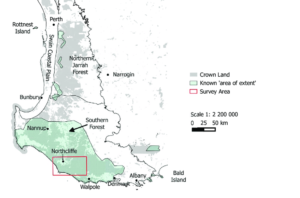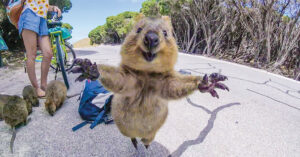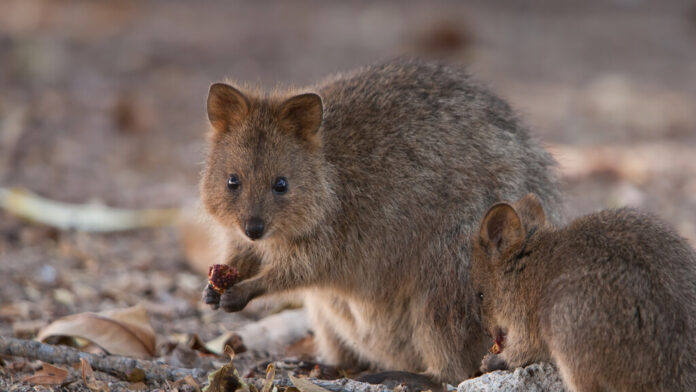Characteristics of the Quokka
The quokka (Setonix brachyurus) belongs to the macropod family, which includes kangaroos and wallabies. Adult quokkas are typically 40 to 54 cm long and weigh between 2.5 to 5 kg. They have a stocky build, rounded ears, and a short, broad head. Their fur is coarse and brown, with lighter underparts. One distinctive feature is their small, dexterous forepaws adept for foraging. Quokkas are known for their curious and friendly nature. They live in family groups and are social animals, although they can be aggressive during mating season. Their ability to climb small trees and shrubs is unique among macropods.
Quokkas are endemic to small, isolated areas of southwestern Australia, with the largest population found on Rottnest Island. They prefer a habitat with dense vegetation like scrublands and forests for cover and food sources. Their presence on Rottnest Island is significant because they have fewer natural predators there, allowing for a more stable population. They are nocturnal and crepuscular, meaning they are most active during the night and twilight hours. They have a specialized digestive system to extract maximum nutrients from their fibrous diet, similar to other macropods.The quokka breeding season usually occurs in late summer, and after a gestation period of about one month, a single joey is born. The joey lives in its mother’s pouch for six months before becoming more independent. Quokkas can live up to ten years in the wild.

Conservational Concerns and Rise to Fame:
The quokka is currently listed as “Vulnerable” by the International Union for Conservation of Nature (IUCN). Their numbers have declined due to habitat loss, predation by introduced species like foxes and cats, and environmental factors. Conservation efforts include habitat protection and predator control. Quokkas have gained significant attention on social media for their photogenic and approachable nature. This popularity has boosted tourism in their native regions, particularly Rottnest Island, where they have become a significant tourist attraction. However, this has also raised concerns about their well-being and the impact of human interaction on their natural behavior. Despite these concerns, the quokka has been seeing a comeback in its populations as a result of its meteoric rise on social media. The spotlight this animal has garnered has been utilized by the island’s residents to make aware the quokkas conservation concerns, in a way being saved because of its distinct and endearing behavior towards the island’s tourists.







